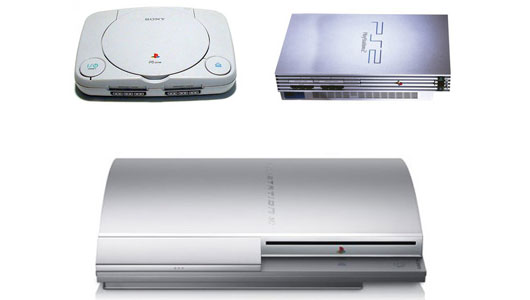I realised, after listening back to the prototype episode of our new BRB Podcast, that I had not been as eloquent and clear as I should have been when describing the difficulties faced by Sony in promising a backward-compatible PS4.
Now, I could honestly sit here and print unending rhetoric on the debate as to whether such compatibility is necessary or not, but that’s not the purpose of this article. However, just in case your interpretation of my writing infers some level of bias, I’ll say outright that I don’t see the need for it. My reasoning can be left for another editorial, however. I came here today to write some unequivocal facts.
Find below the options that Sony are faced with in making this service a reality, and the inherent problems with each solution therein. Keep in mind that whether a game was disc-based or digital, it is coded specifically to work with the PS3 architecture, namely the problematic Cell processor.
Solution 1: Hardware Compatibility
What does this mean?
The Hardware solution is what made both the PS2 and the original run of PS3s backward-compatible. It entails building the necessary electronic components and firmware of those earlier consoles into the case of the new console, essentially meaning there would be — at least in the most bare-bones of ways — a PS3 built inside your PS4.
So why not use this?
It’s expensive, quite frankly. And any expense racked up in the production phase is passed on directly to the consumer. The PS4 is already known to be running some incredibly potent components, none of which are at all cheap, and this solution would increase the cost even more so. Given the approximate cost to build each PS4 unit (somewhere in the region of over $700 per PS4, assuming mass-production discount and not allowing for above average HDDs), and assuming that Sony will sell the console at an enormous loss in order to actually move the thing off of shelves, it seems incredibly unlikely that they’d ever put the still-expensive PS3 hardware in there as well. It just doesn’t make any business sense. Hence their very open stance that backward-compatibility will not be native in the PS4.
Solution 2: Software Emulation
What does this mean?
In the second run of PS3s, Sony retained backward-compatibilty at a reduced cost by using the Cell processor’s power to emulate the unique architecture of the PS2s Emotion Engine. We were at a point, technologically, in which components existed that were powerful enough to do that, and thus PS2 emulators were born, Sony just created their own. In this case, it would mean emulating the idiosyncratic Cell processor using the PS4’s robust architecture.
So why not use this?
This one’s pretty straight-forward: It’s not possible. The Cell processor is so bizarre that no PC build in the consumer-level market is powerful enough to emulate it right now (at least not reliably or at a standard that could be released to the public). PSOne and PS2 games are trivial at this point, but emulating the PS3’s architecture via software is not possible yet, and may not be for some time.
Solution 3: Gaikai’s Streaming Technology
What does this mean?
Gaikai’s tech involves running a game on a computing unit in a data centre that compresses and streams a direct game capture video to the user. The user’s inputs are sent back to the computer, inputted, and the resulting video gets sent back, thus forming a loop that operates only as well as the server and user’s up and down speeds allow.
So why not use this?
There’s a lot of people just assuming that PS3 games will exist in a magical cloud and will be playable via Gaikai’s impressive video streaming technology. The reality of the situation is far more complex and problematic for Sony.
Gaikai functioned to the extent it did previously by running PC games from a handful of data centres. In order for Sony to utilise this technology they would have to establish worldwide data centres, each containing 1000s of PC units built using PS3 components, whilst presumably allowing for each machine to hold a decent number of PS3 games on its HDD so they can be executed on demand. The way that Gaikai (and OnLive) were set up — i.e. running multiple games across multiple virtual machines within one PC — would not work for PS3 games (again, thanks to the Cell), so each unit would only be able to run one game for one user at a time. This means there would have to be, ideally, one unit for every user with access to this service, assuming that each unit’s HDD contained one of every available game.
That’s a lot of PCs/PS3s, and therein lies the problem. Aside from the inevitable problems with licensing deals getting complicated between two platforms being used across multiple regions, the sheer cost of setting up these data centres and hooking the existing Gaikai server software into the PlayStation Network would be huge. So whilst this is, by far, the most likely method to employ, it is also the most expensive. And given Sony’s financial situation at present, combined with the fact that they’re at the start of an enormous PR campaign on behalf of their upcoming system, I can’t foresee them spending the necessary money to make this happen any time soon.
Solution 4: Direct Ports
What does this mean?
Porting a game from one system to another. Much like games developed for PC/360 were often ported to PS3.
So why not use this?
Bottom line? They probably will, eventually. After the success of the PS2 HD Collections on PS3, it seems all but inevitable that something similar will happen on PS4. An Uncharted collection that runs at 60 frames per second, renders at true 1080p and hooks in to the PS4’s sharing and social features is a pretty safe bet, I’d wager. Just expect to be charged again, obviously.
Tags: PlayStation 3, PlayStation 4, PS2, PS3, PS4, Sony



Quite simply spot-on. People crying for backwards compatibility often don’t truly understand the work that’s required. They seem to think it’s a magical switch labelled ‘allow your old games to be played on this here machine’.
Well written. Explanations an idiot could understand. Sony should be spreading this article around to make it clear why they’re not doing some things and to make people appreciate the things they are doing.
TBH I don’t really care about backwards compatibility. I don’t collect games and tend not to replay them too much. While it’s nice to go back and relive some of the glory days, most of the games from those generations have aged horribly.
Very good article BTW. RWR says above, explanations even I could understand!
The absolute bottom line here is that you should just keep your PS3 hooked up for its own titles. However they do it will probably mean more cost to the gamer and probably won’t be available for a while anyway. We’ll just have to wait and see what they actually do.
Backwards compatibility IS a magical switch allowing your old games to be played on this here new machine. PROVIDED of course your previous machine didn’t turn out to be an expensive foray into a hardware cul-de-sac.
The ONLY reason that PS3 backward compatibility is not OOTB possible on PS4 (and the same reason PS2 was not a straight forward deal on the PS3) is that the hardware/architecture and thus software varied/s radically from iteration to iteration ps2->ps3->ps4.
Put simply bespoke solutions create bespoke problems.
You forgot soloution 5. Just keep your PS3. Surely this is the cheapest and most effective method. Even if your console breaks down you can pick a newer one up at next to nothing. This happened to me last year and I got a PS2 for the price of a game, pretty much brand new.
Great article Kev.
I’m curious, does the 360 use one of these methods or is it completely different?
The 360 emulates the original Xbox processor to load and run games. The problem with PS3, like it says in the article, is that the processor is so vastly different to what the PS2 was, or most other consoles for that matter, that the PS3 processor is almost impossible to emulate with current tech, at least to a budget, The only way they could do it OOTB is if they put the PS3’s Cell processor in the PS4 but that would cost a fortune.
All the 360 needs is the software updating which I think is free over Xbox live or on Xbox.com. Most Xbox games will work on it, not all. Last I tried, Burnout Revenge for the original Xbox wouldn’t work on the 360. Thats probably because they never bothered to program the firmware when the game is available for the 360 too.